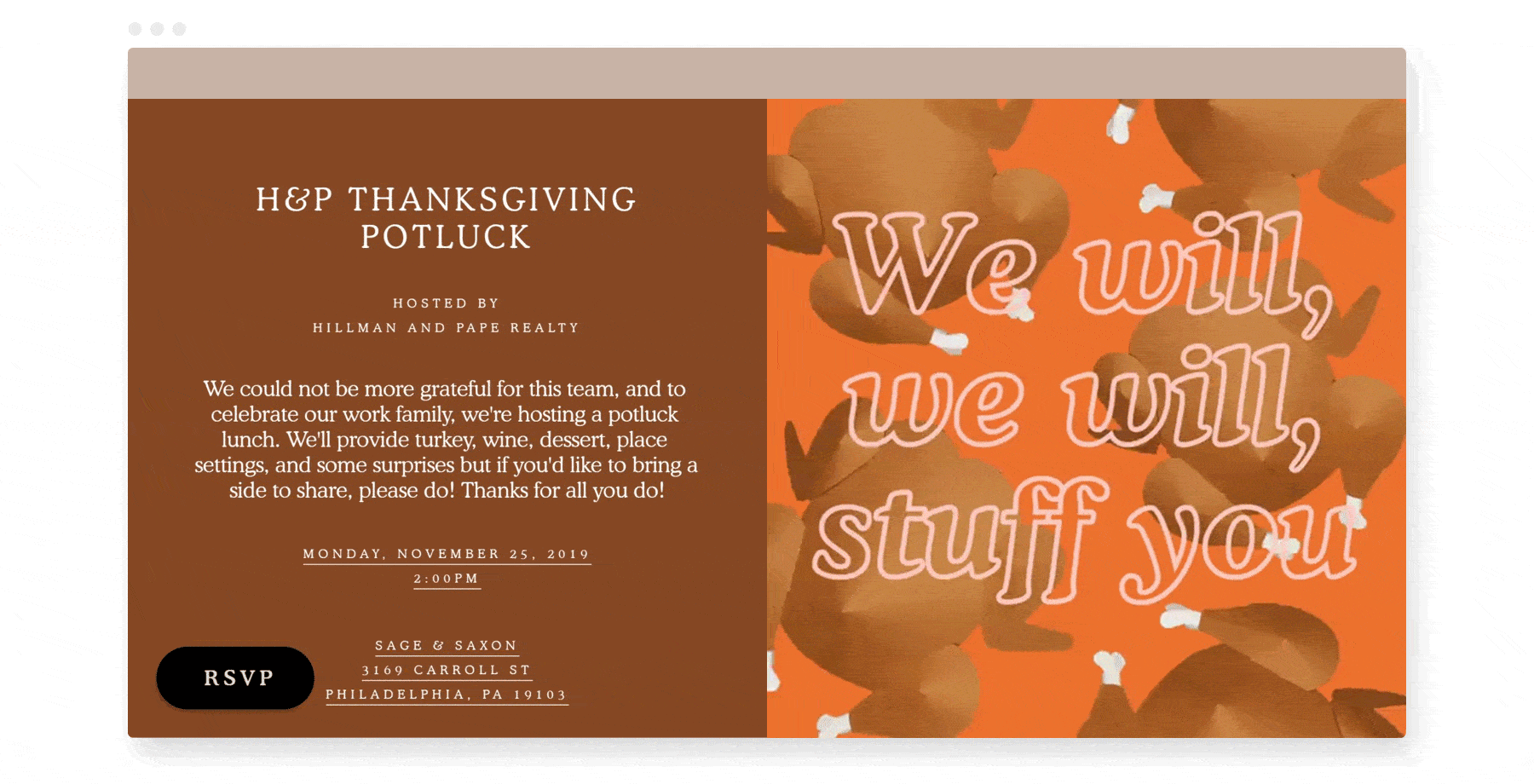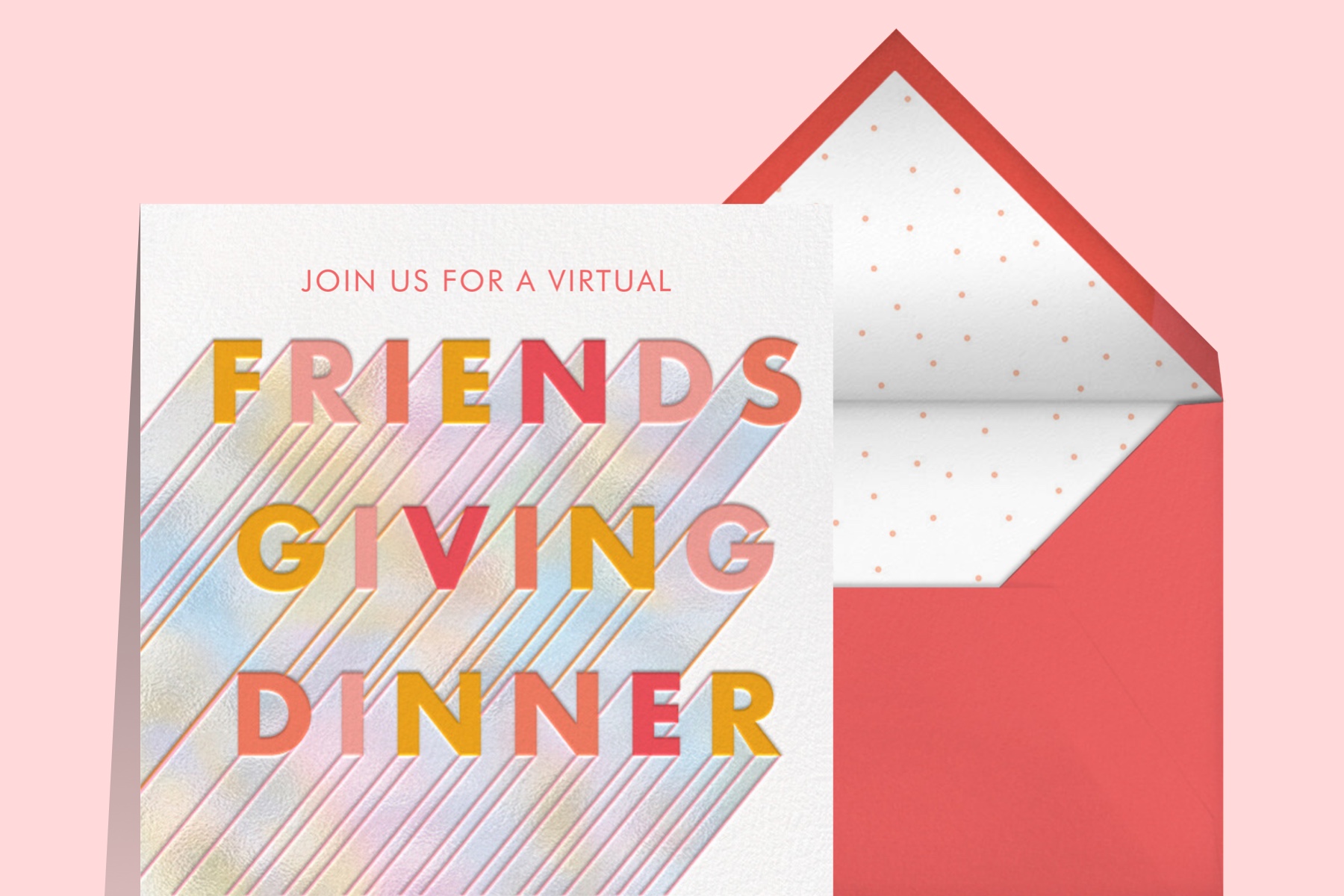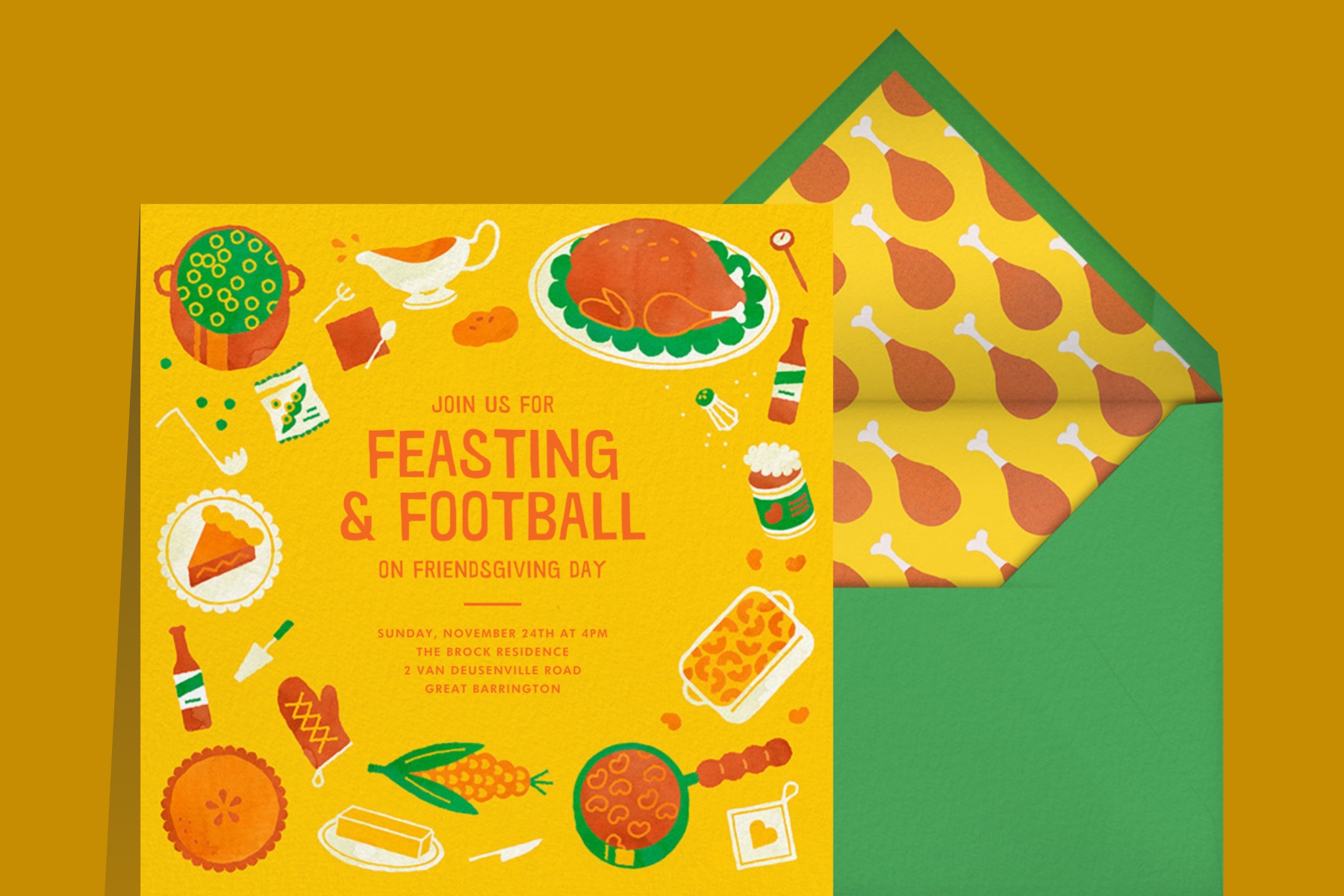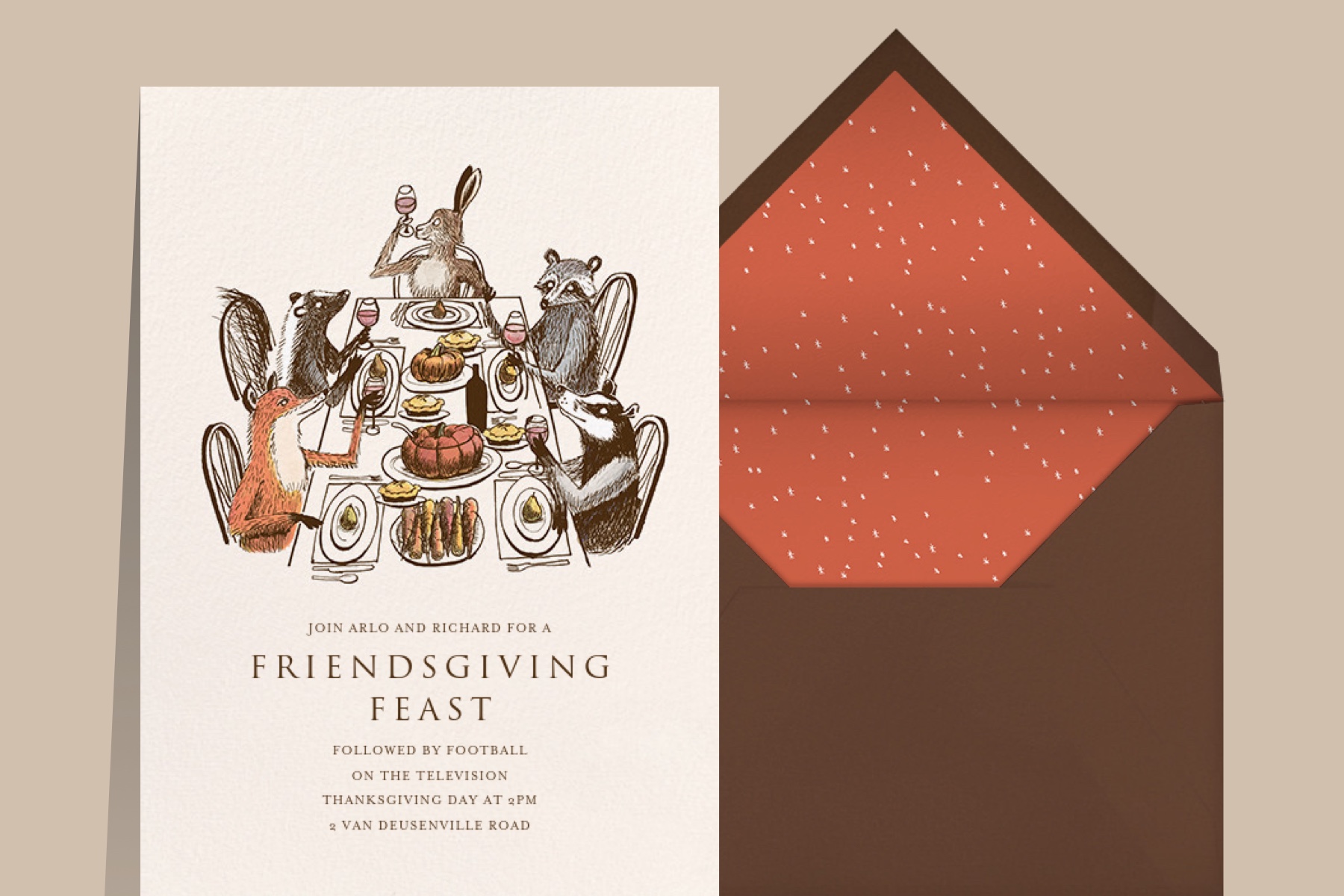Friendsgiving 101: Hosting ideas & tips

Table of Contents
What is Friendsgiving?
Friendsgiving is basically Turkey Days’ fun younger sister. So, when is Friendsgiving? Well, it’s a less formal version of the traditional Thanksgiving that you can host anytime in November (Thursday or not) and more than just family to feast with: Think friends, coworkers, or your book club. Turkey is optional; most Friendsgivings feature a fall-inspired meal so you’re not replicating the main event. With a few candles and a festive playlist, you can make it like a laid-back apartment dinner party, with your pals seated on the couch or floor pillows rather than one big, long table.
Since you’ll be digging into the classic roasted turkey soon, we love the idea of mixing up your menu so it’s fall-inspired, but not exactly like the Thanksgiving meal. Keep things easy with a Thanksgiving potluck style-feast: You prep the main dish, then call on your pals to bring their favorite drinks, side dishes, and desserts. (The easiest way to streamline this is with assignments in your Friendsgiving invitation, but you can also keep it organized in a Google Sheet that everyone can pop in to edit.) The invitation can be more casual than a Thanksgiving invitation so have fun with them. We’re all for maxing out celebrations—and when it comes to Thanksgiving dinner, you can truly have double the fun.
Who invented Friendsgiving? 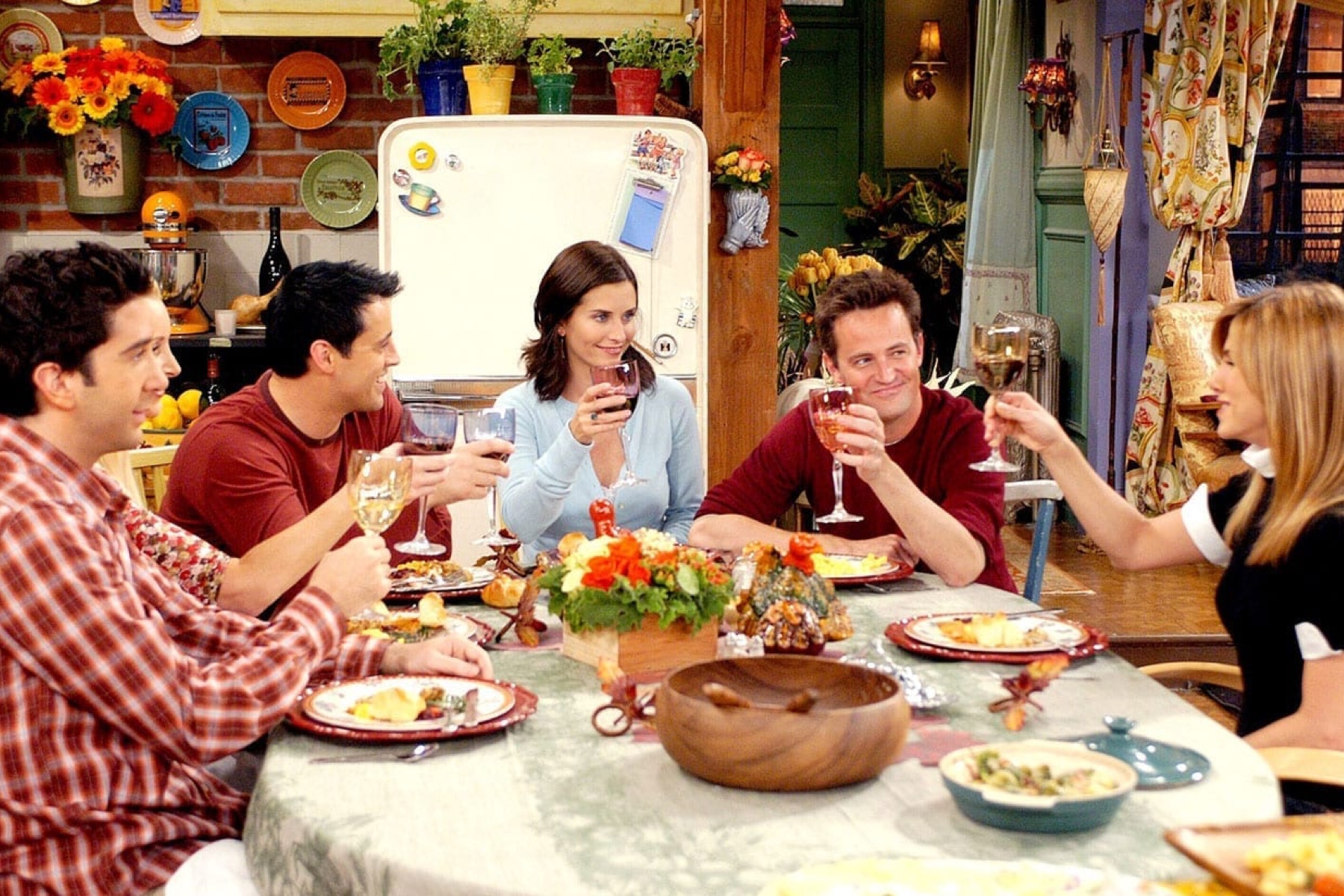
The traditional Thanksgiving goes all the way back to 1863, when President Lincoln called for a day of thanksgiving and praise, giving families a reason to join together and celebrate. As people started getting married and having children later in life, it’s evolved to include friends, too.
The history of Friendsgiving, on the other hand, is a little fuzzy. We all remember those classic Friends episodes (the first in 1994) when the crew got together in the West Village instead of going their separate ways to feast with their families. (Unlike Joey and Monica, your Friendsgiving guests do not have to stick their heads in the bird.) It resurfaced on Twitter around 2007, and on Google in 2011, when Baileys Irish Cream dispatched an ad wishing everyone a “Happy Friendsgiving,” and when it became part of a plot in the “Gobblefellas” episode of Real Housewives of New Jersey.
In 2020 Friendsgiving became truly official with a definition in Merriam-Webster, explaining the word as a mash-up of friends and Thanksgiving that refers to a large meal that friends enjoy together during the Thanksgiving season.
Planning your Friendsgiving party
Anything goes with a Friendsgiving party, but we at Paperless Post have some ideas to make it a special occasion.
Work Friendsgiving
A Friendsgiving feast is a savvy way to connect with coworkers. Avoid adding stress to a busy time at work by ordering in the main dish (grocery stores and specialty food stores have plenty of tasty pre-roasted meat ready to go) and supplementing with homemade sides and desserts.
“Stuffed Turkey” invitation from Paperless Post Flyer.
Friend reunion
Get quality time with the folks you’ve only seen for a virtual happy hour by inviting nearby pals to your place. Or catch up with college friends in different parts of the country with a Zoom Friendsgiving celebration (throw up festive backgrounds to make it special). If you’re doing it virtually, set a time that works well across time zones and encourage everyone to order in their favorite dish and crack open a bottle of wine. Bonus points for a favorite game that gets your friends in good spirits.
Practice round
If you’re hosting a Thanksgiving meal or celebration for the first time this year and have fears that your turkey will turn out like Clark Griswold’s in Christmas Family Vacation, use Friendsgiving as a test-drive. It’s a low-stress way to do a dry run on your recipe, and you’ll have plenty of honest taste-testers to give feedback. Save time and energy by asking your attendees to bring sides, desserts, and drinks. (And if things go wrong, takeout is a quick fix.)
What to do for Friendsgiving?
You can certainly freestyle your Friendsgiving, but we have some pointers on making it a success. Research festive Thanksgiving or fall drinks and apps and have them ready when guests arrive—that’ll buy you time on any last-minute cooking or reheating, and kick things off on a fun note. Try a seasonal cocktail like spiked apple cider or mulled wine, or keep it simple with wine and beer so you don’t have to play bartender.
Keep appetizers light so everyone has an appetite for the main meal. Save the charcuterie board for wine night, and opt for raw or pickled vegetables and dip, nuts, and olives that are easy to set out and enjoy.
You can also make the cooking part of the party. Friendsgiving is the perfect opportunity to get funky with your recipes: Try a fried turkey or throw it back with a Jell-O mold—the worst that could come of it is a good laugh. Have a table, sideboard, or kitchen counter cleared, then take turns reheating and plating dishes, and set them out buffet-style so everyone can easily file through and choose what they like.
When to host Friendsgiving?
The real beauty of Friendsgiving is that it turned our favorite fall holiday (OK—it’s a tie with Halloween) into a whole season. Pick any day in the month of November: You can do a weeknight that works for your crew or make it a Saturday afternoon soirée. If you have a standing book club or church group night, consider swapping it in for your usual get-together—that way, you know everyone has the evening marked off in their calendars.
A low-maintenance way to make it happen is to host it on the Friday after Thanksgiving and call on your friends to bring leftovers from the main event. You could do a brunch-style party with sandwiches and slices of pie, or round out leftover turkey (thanks, Aunt Ellen!) with new sides and desserts.
Rookie tips for hosting your first Friendsgiving
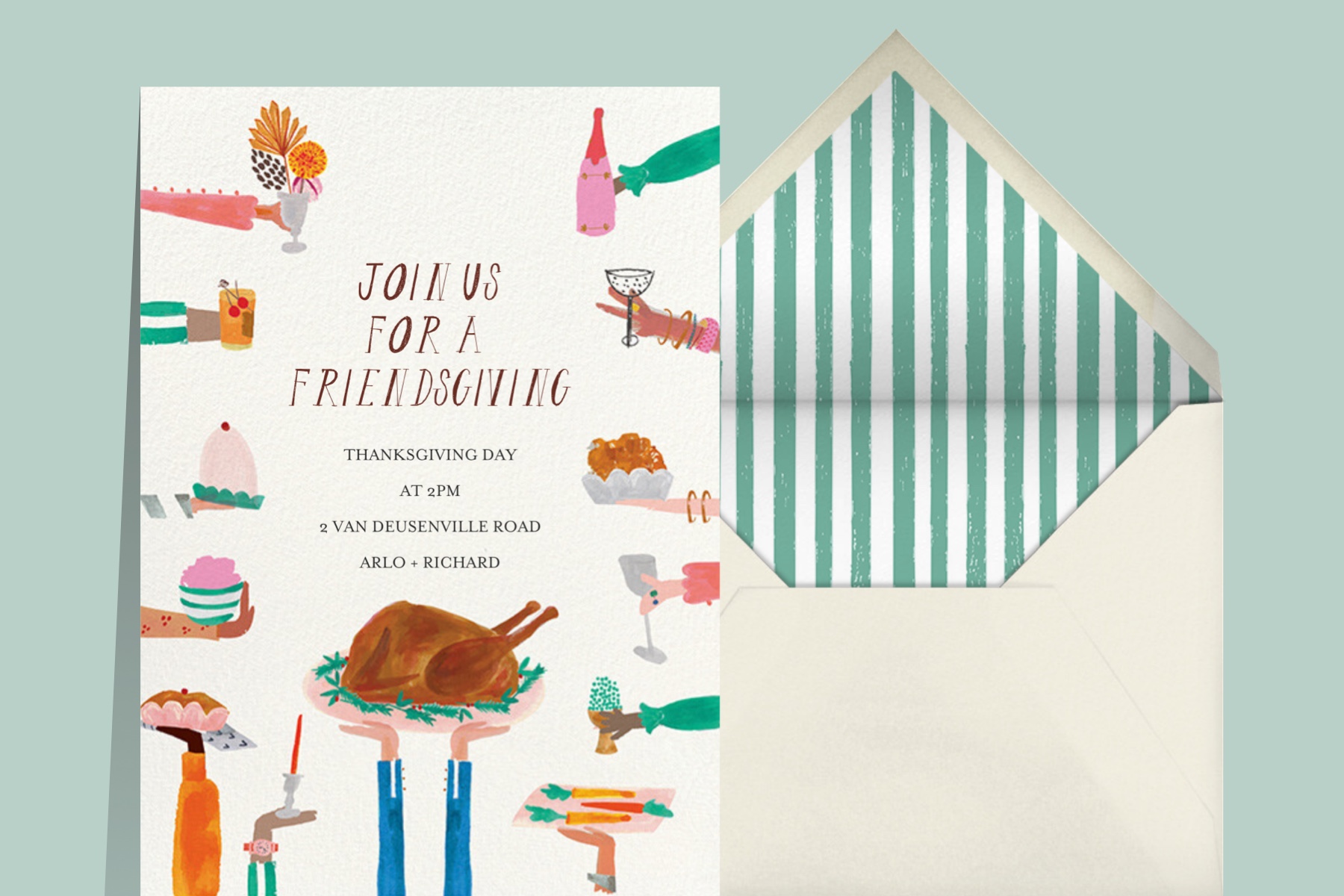 If this is your first-ever Friendsgiving, welcome to the party! We recommend starting early to give yourself plenty of time to get organized. Send Friendsgiving invites two to four weeks in advance, and order a turkey around the same time (you’ll thank us later).
If this is your first-ever Friendsgiving, welcome to the party! We recommend starting early to give yourself plenty of time to get organized. Send Friendsgiving invites two to four weeks in advance, and order a turkey around the same time (you’ll thank us later).
Once the Friendsgiving invites are out and you have a rough idea of who’ll be attending, plan out the menu. Let your friends know what you’ll be covering (the main and drinks, for example) then delegate. If you have a resident chef in your group, ask them what they’re planning on bringing. Have the busy bees bring something low-maintenance, like bottles of wine or pie (which they can easily pick up at a bakery), and fill in the blanks by assigning sides. Keep some loose categories in mind so you end up with a well-rounded meal: Cover drinks, vegetables, carbs, bread, and desserts.
The week before your fête, get going on the Friendsgiving decorations. Centerpieces and pressed linens are optional; you can make it feel festive with faux leaves scattered on a table or buffet, mini pumpkins, or vases of wheat.
You’ve delegated and decorated, so now all you have to do is stay stress-free. Pick up your turkey and clear off some counter space for the food, and factor in a few extra seats if you have them available (stools from the kitchen counter and ottomans are fair game).
Everyone lives for leftovers, so don’t forget them. Stock up on extra Tupperware or compostable food containers that you can send guests home with (extra points for ones with dividers so they can separate the extra pie from the creamed spinach).
Browse Friendsgiving Invitations
Dispatch one of our Friendsgiving invitations, and get ready to gobble. Hosting Thanksgiving? Check out our guide to Thanksgiving invitation wording.
